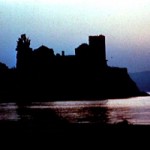Cyrillic Manuscript Heritage (CMH), the biannual newsletter of the Hilandar Research Library (HRL) and the Resource Center for Medieval Slavic Studies (RCMSS), is entering its 16th year of publication under the editorship of Helene Senecal, RCMSS Coordinator. Volume 31 has just been issued.

CMH vol. 1 (April 1997)
The inaugural volume of CMH, which outlined the history and structure of HRL/RCMSS, was published in April 1997 with the assistance of Lorraine Abraham (media editor), Dongsoo Jeon and M.A. Johnson (contributing editors), and R.J. Stansbury (technical consultant).

CMH vol. 3 (June 1998): 8
A “Selected Bibliography” of “theses, dissertations, books and articles made possible and/or enhanced by the primary and secondary source materials, especially manuscripts on microform, of the HRL or through the support of the RCMSS” debuted in volume 3. See also volumes 7, 9, 11, 13, 15, 16, 20, and 21.
From CMH 4, the names of donors who have contributed to the Hilandar Endowment and other named funds have been listed in the newsletter. The names of donors of “gifts in kind” have appeared in CMH since volume 6.

CMH vol. 5 (May 1999): 6
The recurring features, “Director’s Desk” by Predrag Matejic and “HRL Journal” – where CMH “asks researchers who have used the HRL in the past year, either in person or by mail, to describe their experiences and work,” first appeared as regular columns in volume 5. The design editor for this volume was John R. Wilson.

CMH vol. 6 (December 1999)
A series of interviews introducing readers to the members of the RCMSS Advisory Councils was initiated in CMH 6 with profiles of Daniel E. Collins and Edward Kasinec, and continued in volumes 7, 8, 10, 11, 13, 15-17. Volume 6 also reported on the first Medieval Slavic Summer Institute (MSSI) and set a precedent for a two-page photo spread of the MSSI activities and reactions from the participants.

CMH vol. 15 (May 2004)
“News Notes” appeared as a regular feature title in volume 15; earlier issues included the headlines “RCMSS/HRL in the News” (CMH 6), “In the News” (CMH 7, 13), and “RCMSS News Briefs” (CMH 10).
Volume 23 was the first to be published in color. Volumes 1-22 are archived online with color photos inserted in place of the black and white images that were printed.

CMH 23 (June 2008): 8
Back issues of Cyrillic Manuscript Heritage are available on the OSU Knowledge Bank and the RCMSS website.





 The Very Rev. Dr. Mateja Matejic presented an update on the Hilandar Research Project, representatives from various countries reported on the status of Slavic and medieval studies, and recommendations regarding the future work and development of the Hilandar Research Project were made by working groups composed from 45 scholars of 31 institutions of higher education in North America and Europe.
The Very Rev. Dr. Mateja Matejic presented an update on the Hilandar Research Project, representatives from various countries reported on the status of Slavic and medieval studies, and recommendations regarding the future work and development of the Hilandar Research Project were made by working groups composed from 45 scholars of 31 institutions of higher education in North America and Europe.










